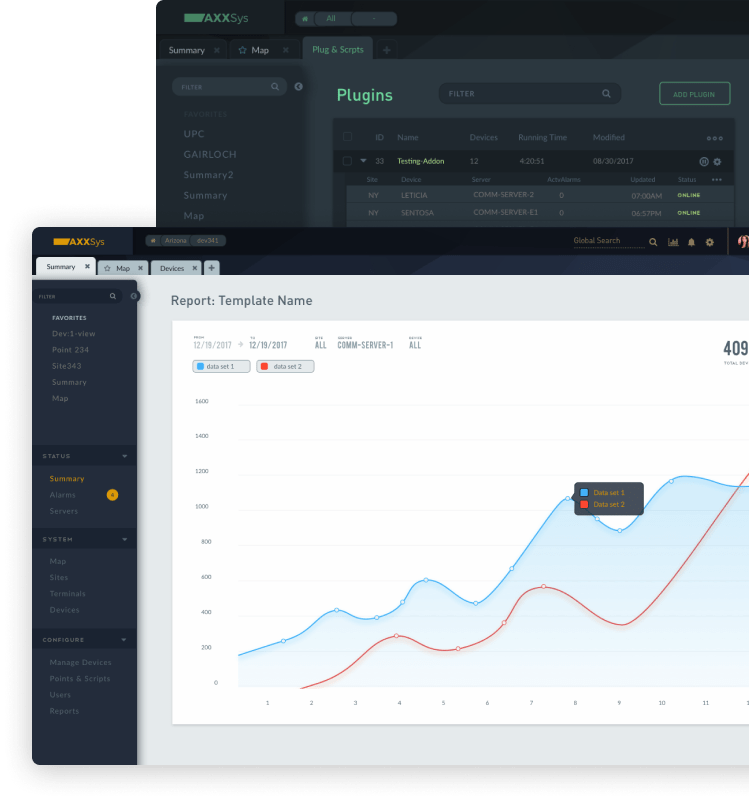Departure from legacy system
We were contracted to build a single improved web application to replace what was previously handled by three entirely separate systems. The Ground control team had to rely on a system for equipment alerts, and then login to a separate system to connect and view diagnostics that triggered this alert. A third system was used to make changes remotely to equipment, we focused on improving all facets of the multiple systems and combining them into a single platform.
Client
Globecomm controls a large network of satellites and needed an improved system with multiple layers of safety and redundancies native to it.
One system to rule them all
The complexity of this system started with their linked nodes, servers and stations, all of which needed to communicate with our new platform. Network and signal changes needed to be executable on the fly while maintaining consistent data transfers.
Our solution was to architect a single web portal with full system asset display with only critical identification tagging visible with the ability to drill down to any device as needed.
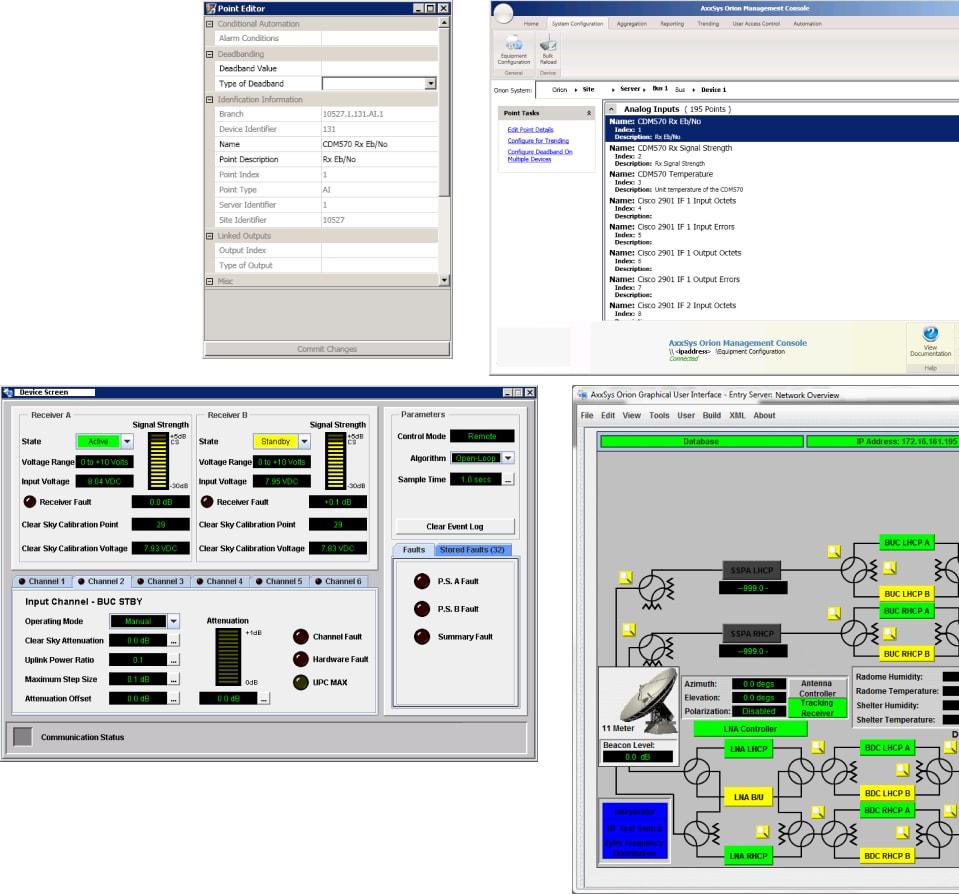
Rebuilding the platform
The ground control team’s role was typically a reactionary one, with successes resting upon the speed and accuracy of these reactions. The display featuring the entire network was set to notify potential problem areas by enlarging and highlighting these particular satellites.
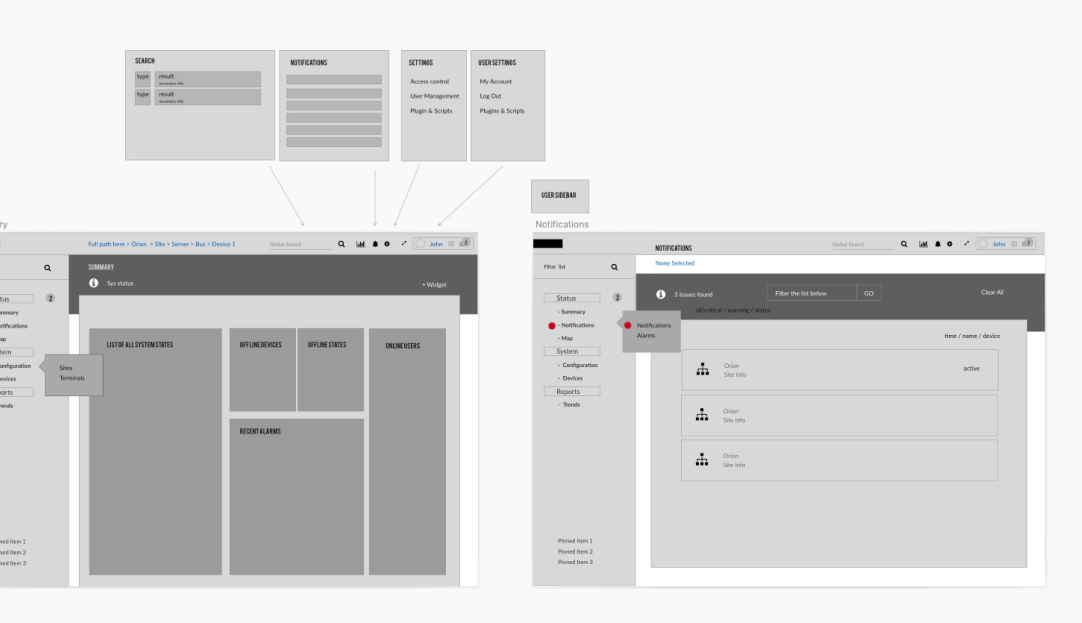
Network Overview
The same concept was applied to the network view or the system as well. Network status were pushed to the forefront for the team to address should varriences outside of parameters arise.
For example if a node required diverting due to a maintenance mode status the team would be alerted which network required attention from the full system overview.
The New Dashboard
A tabbing system was developed to further assist the team’s efforts that allowed simple on-the-fly customization that could quickly be tailored for different operations. This further allowed optimum flexibility for each technician’s preferences to display portions of the system such as network topology or device monitoring. The design of a darkmode was necessitated by the typical dark working environment of the tech team.
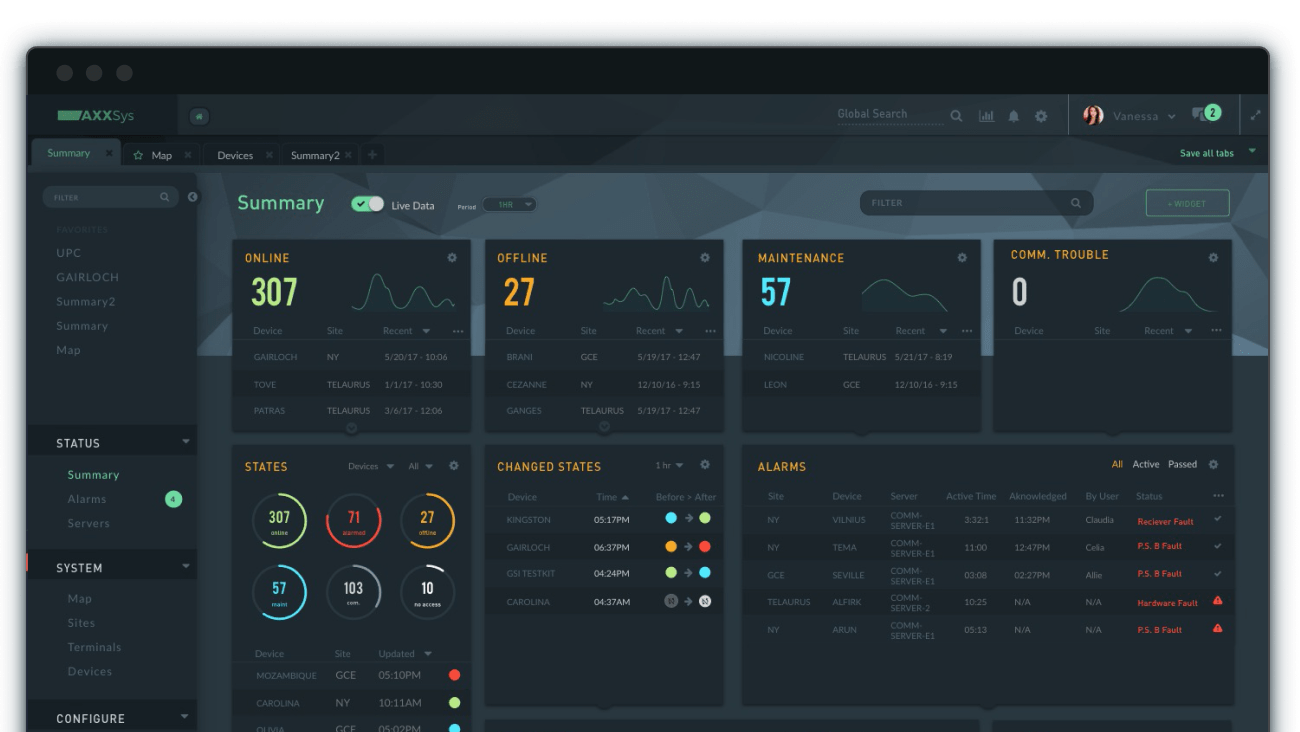
Architecture
Working exclusively in Angular at the request of the client, their legacy system was able to pipe data directly to the new web platform. This ensured a simple implementation and even future maintenance by their in-house team.
Views
We worked to incorporate functions that were reminiscent of portions of the legacy system to shorten the training time for the new platform. Tab functions were one such carry-over, however now with the addition of filtering to quickly find any device within the vast network with priority given to devices that did not have a “green” state.
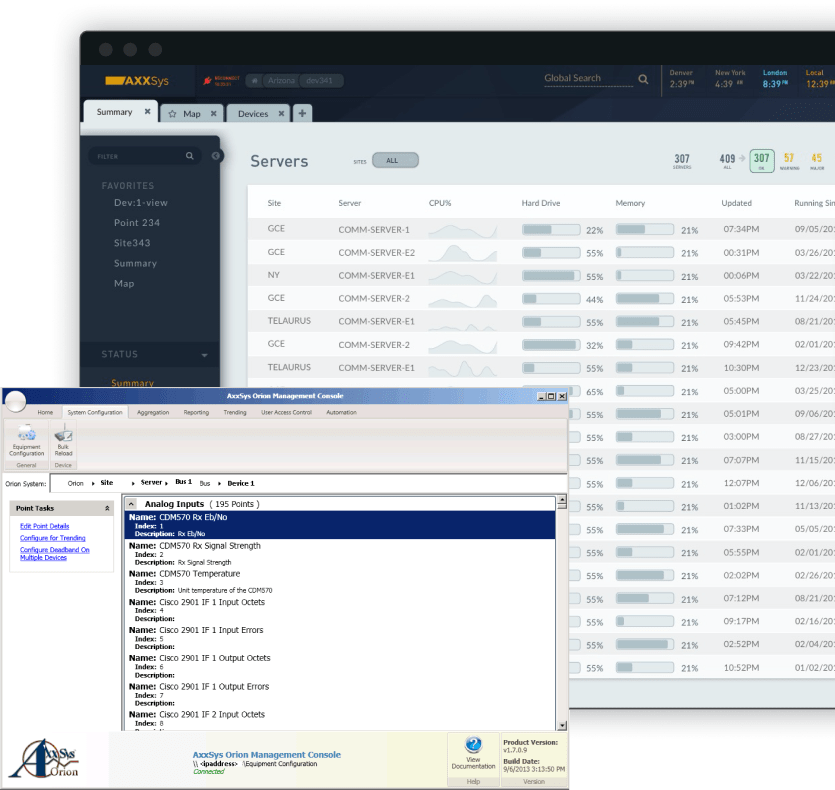
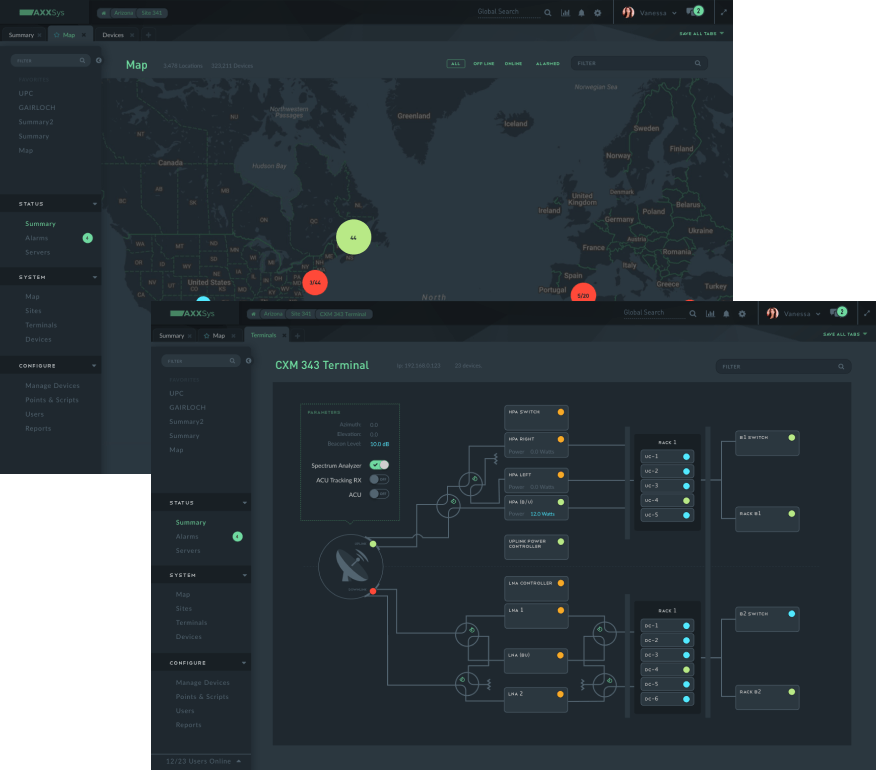
Network Topology
Our improved take on network topology delivered clear and concise device statuses which are key to the success of the system. Through the creation of standardized components, Globecomm’s team was empowered to quickly generate templates for their ground networks. Additionally, network flow controls were accessible natively from the topology view with only a simple click of the appropriate gates.
Node World Map
We created an additional view featuring a world map displaying the entirety of operational nodes and their relative states. This facilitated utilizing the node map as a tab to quickly visualize where in relation to the earth the alert issues originated from.
Device Views
Each device had an individual sidebar view designed for it. This allowed users to have multiple devices open side by side and quickly compare parameters.
Accordion Layout
To ensure the cleanest possible visualization, accordion layouts were utilized. These would remove all devices from the display if no immediate attention was needed; this allowed users to quickly expand devices when needed for more in-depth statuses.
System-Wide Access
A key improvement was the ability to access device views from anywhere in the system as opposed to the previous need to search and swap to accomplish this. If a device would likely require closer monitoring, the ability to pin these items was also added.
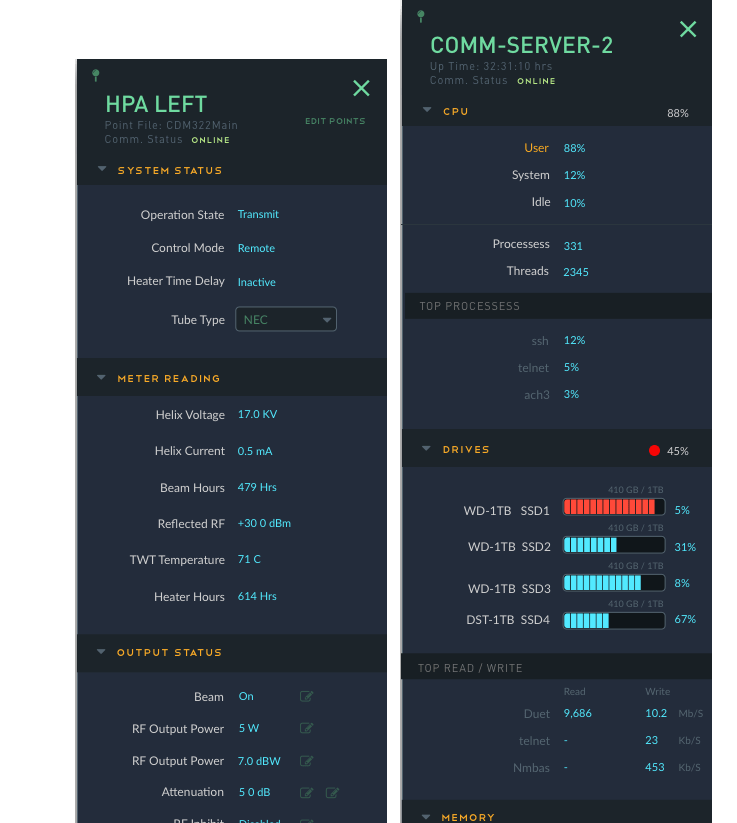
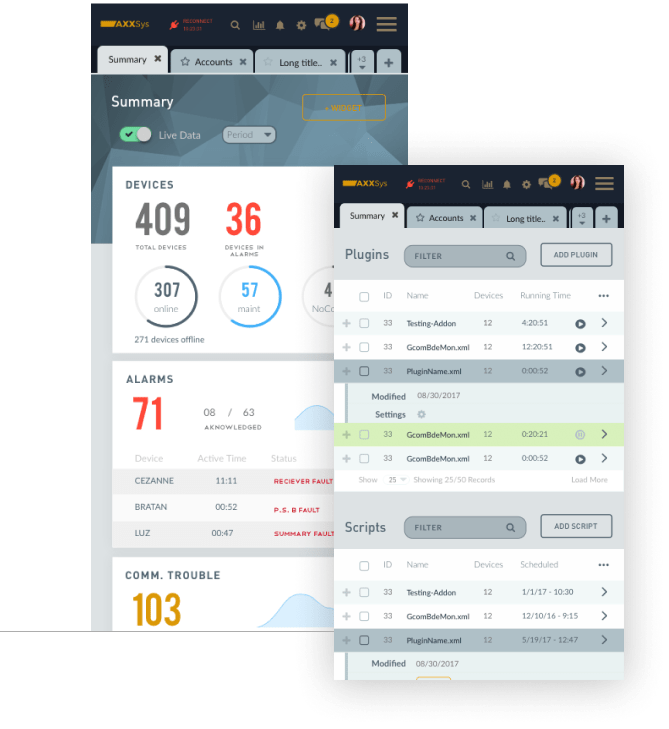
Not just a desktop applications
While primarily a desktop application, we built a fully mobile optimized version of the system as well. This expanded the abilities of communication and remote assistance when the ground team required it.
Analytics
Strong analytics and reporting ensured the company could continuously work to improve their systems across the board. We collaborated with management to design reporting operations that pulled the most actionable statistics on performance and made them easy to generate.
Results
The v1 of the system was a great success. The event response time was nearly doubled which resulted in increase in the overall health of the network
